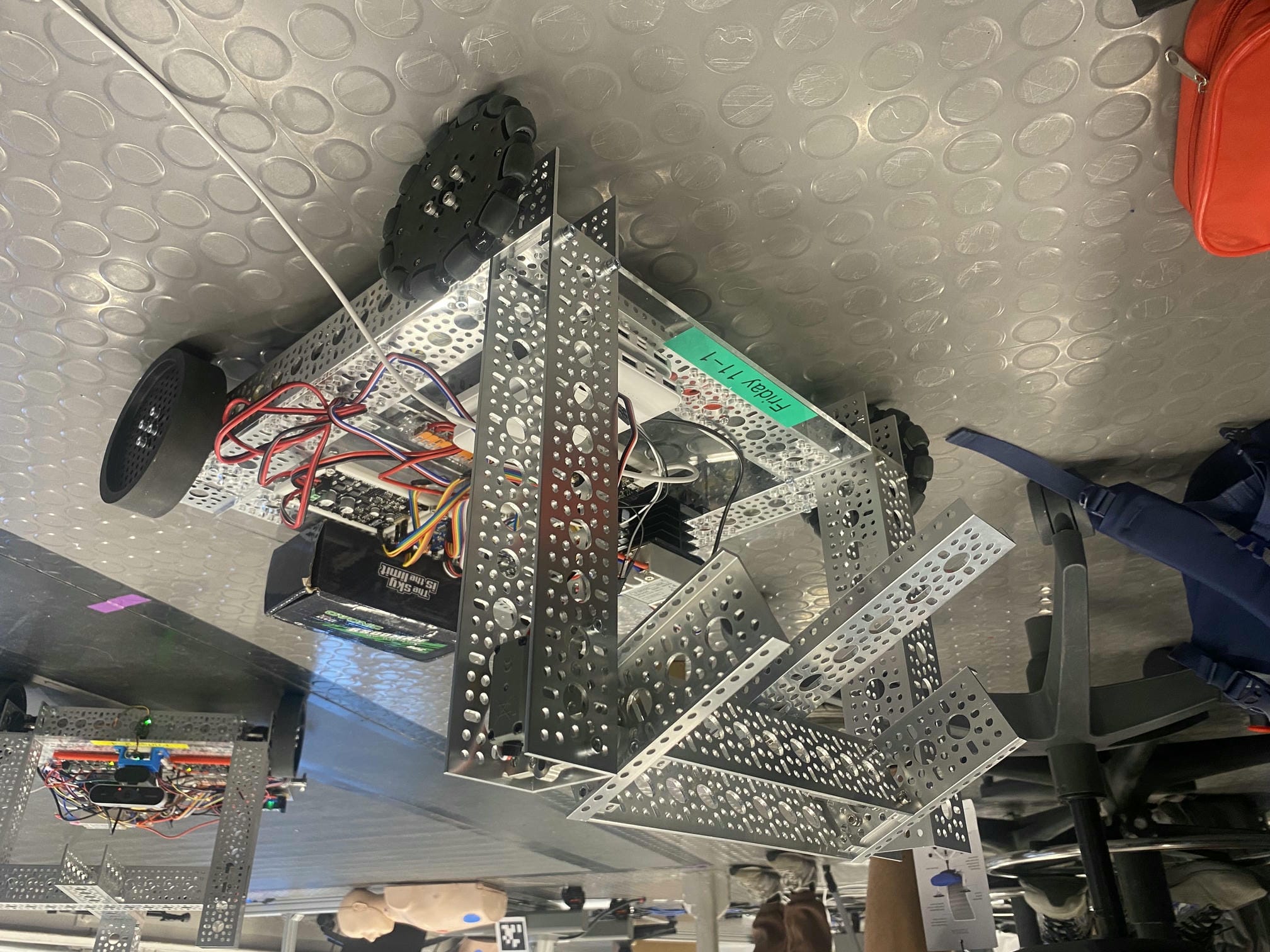Computer vision for april tag detection and obstacle avoidance
- CategoryClass project
- Project dateSpring 2023
- Skills usedPython, OpenCV, HSV filtering, AR overlays
- Github repository
About this project
For 2.12, Introduction to Robotics, I was responsible for computer vision for the navigation of a mobile robot. The mobile robot is tasked with navigating to pick up a red AED and bring it to a patient experiencing cardiac arrest while avoiding cones in its way. The robot chassis looked as follows and is controlled by a Jetson Nano. The arm attached the front tilts back to retrieve the AED off the stand.
For April tag detection, I first need to find the internal matrix for the specific camera I’m using, so I run a calibration script and show the camera a standard checkerboard pattern. The script takes snapshots of the checkerboard for 30 seconds and then calculates an internal matrix detailing the camera’s properties, thus accounting for differences in focal length, field of view, etc. Showing the camera more angles of the checkerboard is actually advantageous, since it’ll provide a more complete dataset to draw from.

I can then input the camera matrix into my April tag detection file, which constantly searches for April tags from a given family. If it detects one, I detect the corners and draw a box with it. I also added some augmented reality components to the program by having each axis projected onto the center of the tag. On the top of the tag, I display the pitch, roll, and yaw of the tag relative to the camera.
The program for cone detection is also pretty straightforward: it applies a series of filters and masks to the image, then looks for pixels which fit within the range of HSV values I’ve predetermined for cones. It then looks for the largest contiguous section of pixels which satisfy these requirements, which is typically the bottom section of the cone, and then determines its center and minimum radius to enclose it. Finally, it draws a circle around the object in the original image. I used HSV instead of RGB since it’s more robust under different lighting conditions, but nonetheless I would recommend tuning the program anytime the robot is operating in a new environment.